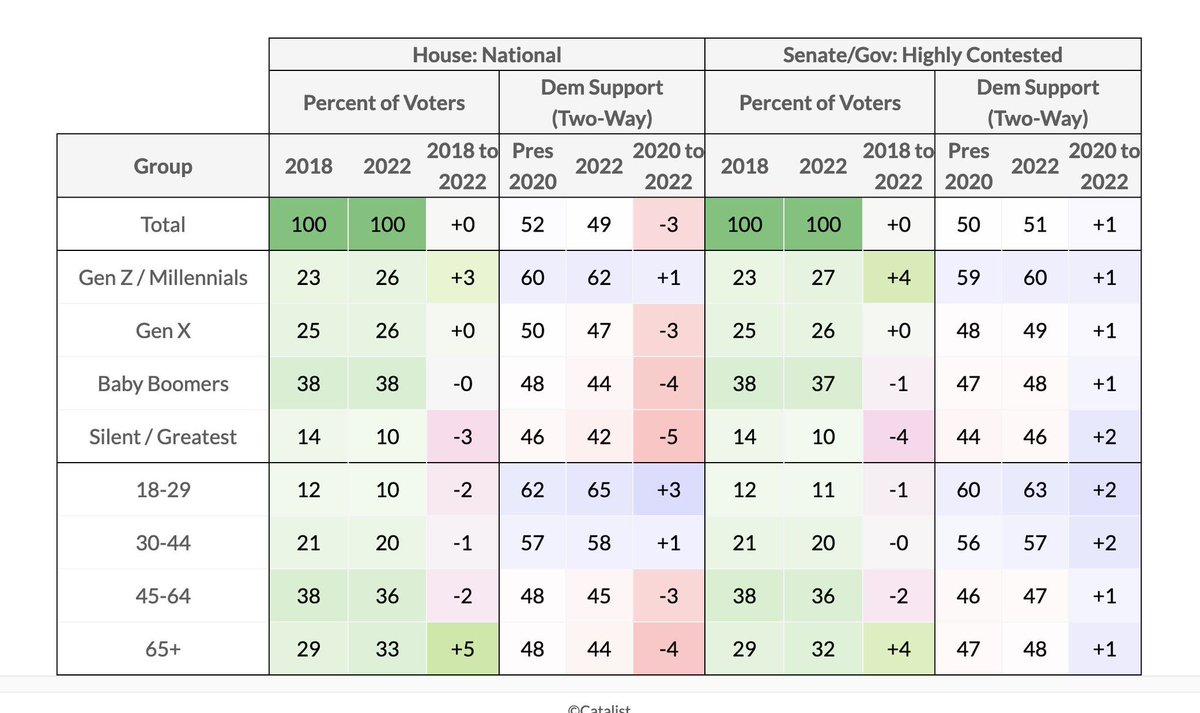
data-driven journalist and author of the book & Substack STRENGTH IN NUMBERS. co-founder @50plus1news. formerly 538, @theeconomist. i check email, not DMs
9 subscribers
How to get URL link on X (Twitter) App






https://twitter.com/Redistrict/status/1713182445141402038I took a look yesterday at how much Dem state-lvl POTUS margins tends to change from year to year. It’s about 7pp in our current high-polarization era. That’s a lot! With 2020 as our starting point simulating correlated changes across states, you get p(Biden >= 270) around 60%.
https://twitter.com/rickklein/status/1659550580996489217Lots to share, but for now I'll just say FiveThirtyEight was one of the outlets that inspired me to be a data journalist. Nate Silver did great work & the team he led changed political journalism for the better. We will be iterating on that, but we start with a strong foundation.

 yes, however, rolling back convenience voting reforms for students is not going to be an effective voter suppression strategy when the average Gen Z voter is out of school (my back-of-envelope math says this should happen around 2028)
yes, however, rolling back convenience voting reforms for students is not going to be an effective voter suppression strategy when the average Gen Z voter is out of school (my back-of-envelope math says this should happen around 2028) https://twitter.com/PoliticsWolf/status/1659251113126658075?s=20

https://twitter.com/conncarroll/status/1647957599965306880eg
https://twitter.com/jonathanchait/status/1647579248113201153



https://twitter.com/KSoltisAnderson/status/1593255531036409862if someone has a bad record, is opaque about their methods and then tells you they “want to be the elon musk of” that thing, that’s a 🚩 🚩


https://twitter.com/seantrende/status/1590681467709190145One issue is that the popular vote is much likelier to end up < R+1 than at R+2 or more. See here
https://twitter.com/gelliottmorris/status/1590420170337529856

https://twitter.com/kikollan/status/1586825117576953865The * here is that doing this assumes that state voting patterns will be constant as new votes come in, which is not true. So it's an estimate with a wide margin of error!

https://twitter.com/pollhannes/status/1585832223814475776remember, registered republicans were more likely than democrats to answer polls for much of 2020, including during the summer boost in response rates from Dem activists — so even well designed polls that stratify &/or weight by party don’t solve nonresponse by vote intention!

https://twitter.com/SimonWDC/status/1584527633127440386


 So while the claim is that GOP partisan polls are pushing up Republican numbers in the averages, what we see from these two model runs is when you exclude those partisan polls from the averages Democrats actually end up _worse off_ in most states
So while the claim is that GOP partisan polls are pushing up Republican numbers in the averages, what we see from these two model runs is when you exclude those partisan polls from the averages Democrats actually end up _worse off_ in most states

 The "true" interval is probably EVEN LARGER due to coverage error (that's when a population isn't represented by the sampling frame, such as "ppl with landlines" or "X online panel"), processing error (are the targets right? do they control for non-response?) or measurement error
The "true" interval is probably EVEN LARGER due to coverage error (that's when a population isn't represented by the sampling frame, such as "ppl with landlines" or "X online panel"), processing error (are the targets right? do they control for non-response?) or measurement error

 Here is the article if you want to skip the gory details:
Here is the article if you want to skip the gory details: